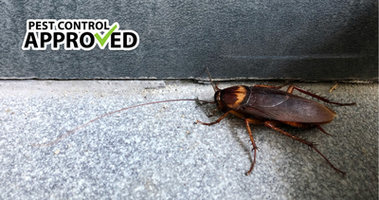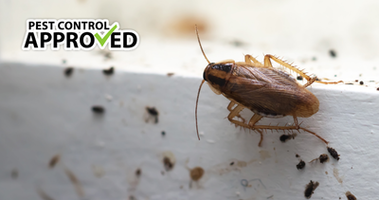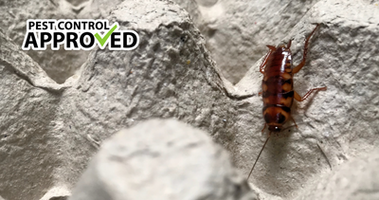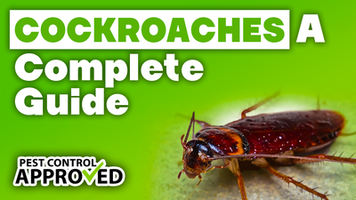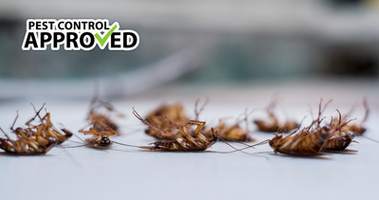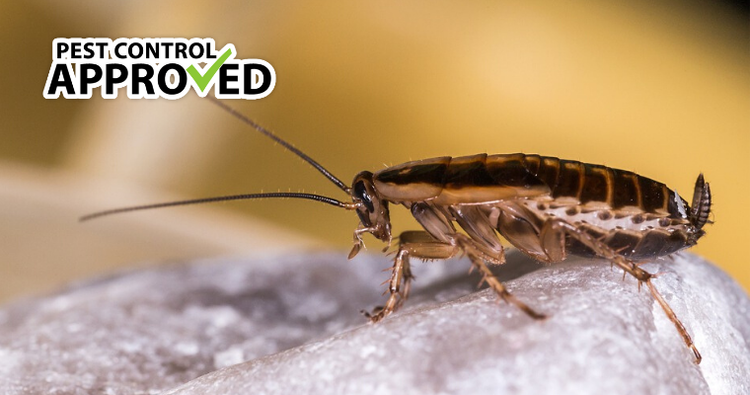
Cockroaches are one of the most disgusting creatures you can find in your home. But, should you worry if you find one cockroach? The simple answer is, Yes. However, It can depend on the type of cockroach, where you live, and where you found it. People worry about cockroaches because of their reputation as dirty, hard to kill, and expensive to eliminate. But they do not directly harm people.
They rarely bite and cannot sting or inject poison. They also do minimal damage to your home compared to insects like Termites or Carpenter Ants. They mainly destroy keepsakes, books, and paper. But property damage can be done by the clean-up required to remove cockroaches. The main problem with a cockroach infestation is the potential adverse health effects.
Health Effects
Wherever they go, cockroaches spread feces, saliva, and shed body parts. These items, especially their body parts, can worsen allergies and asthma. Much like dust mites, the proteins in their body can trigger allergy or asthma attacks in affected individuals.
Cockroaches also accumulate bacteria as they eat dirty and contaminated food. This bacteria can be passed onto humans as they walk across food preparation surfaces. They are known to host over 30 species of bacteria, including the one responsible for Typhus.
Should You Worry?
So, should you worry if you see one cockroach? The answer depends on where you live and what kind of cockroach you saw. Identifying the species of cockroach is important. Cockroaches are more common in Eastern Canada than Western Canada. But while they are not native to Alberta, cockroaches can travel to the province through global food and goods distribution, and international travel.
Once they are in your area, cockroaches can live in houses, restaurants, and warehouses. From these places, they can travel to your home. To identify a cockroach, set a trap and compare it to pictures online. If you are unable to identify the cockroach yourself, you can send pictures to your local pest control company. The five most commonly found cockroaches in Canada and the US are listed below, from most common to least common.
German Cockroach
- Light brown or tan
- Two dark parallel stripes on back
- 40 m.m. (1 ½ inches) long
- Oval shaped
- Prefers humid areas
- Rarely flies
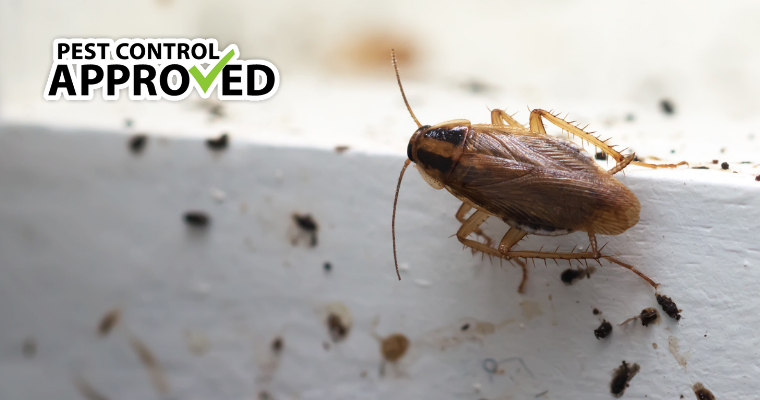
German Cockroaches rarely travel alone. If you see one, there is likely an infestation. They are most commonly found in dark, moist areas such as storage areas, bathrooms, or the backs of cabinets or drawers.
American Cockroach
- Reddish-brown
- Yellow band behind head
- 40 m.m. (1 ½ inches) long
- Food loving cockroach
- Long wings
The American Cockroach does not commonly infest houses, but it is frequently found in restaurants. If you find an American cockroach, it is likely that a lone cockroach traveled from a restaurant into your home. In rare cases they will infest household kitchens.
Brown Banded Cockroach
- 13 m.m. (1/2 inch) long
- Males are golden brown
- Females darker brown
- Shells have yellow bands
- Long antenna
- Prefers warm (below 29 °C) areas
These cockroaches often enter homes seeking warmth. Even if a single Brown Banded Cockroach enters your home, it should be treated right away. They are known to carry bacteria and disease more frequently than other cockroaches. They are often found behind cabinets and in bathrooms.
Oriental Cockroach
- Loves water and moist places
- Dark brown to black
- 25 m.m. (1 inch) long
- Non-functional wings
The Oriental Cockroach thrives only on the ground floor. If you find one in an upper level apartment, chances are that it was accidentally transported from a lower level and will quickly die. Oriental cockroaches prefer basements and cool, damp places. An infestation of Oriental cockroaches can only occur on lower levels of homes and apartments.
Pennsylvania Wood Cockroach
- Dark brown shell
- 25 m.m. (1 inch) long
- Thorax and wings outlined in yellow/white
- Active during the day
Pennsylvania Wood Cockroaches are rarely found in homes. They prefer the woods and plant undergrowth. Unlikely most cockroaches, they are active during the day. If you see a cockroach in sunlight, it is likely a Pennsylvania Wood cockroach. Finding one likely does not indicate an infestation as they rarely infest homes and are solitary.
Signs of Infestation
The strongest indication of a cockroach infestation is a strong, musty odor. They frequently infest unkept, abandoned, or summer properties, but can infest any home. Generally, they prefer areas that you don’t use often. Their droppings are small and look like coffee grounds or ground pepper. Sometimes, they leave tiny black smears on the walls. If viewed with a magnifying glass, their droppings appear teardrop shaped. Be careful when looking at cockroach droppings, they can cause health issues if inhaled.
If your allergies and asthma have worsened and you see a cockroach, you may have an infestation. Asthma and allergies often get worse when cockroaches are in the house.
Cockroaches can enter a house through small spaces such as gaps in windows and doors, or they can be brought in from grocery stores, restaurants, and private residences.
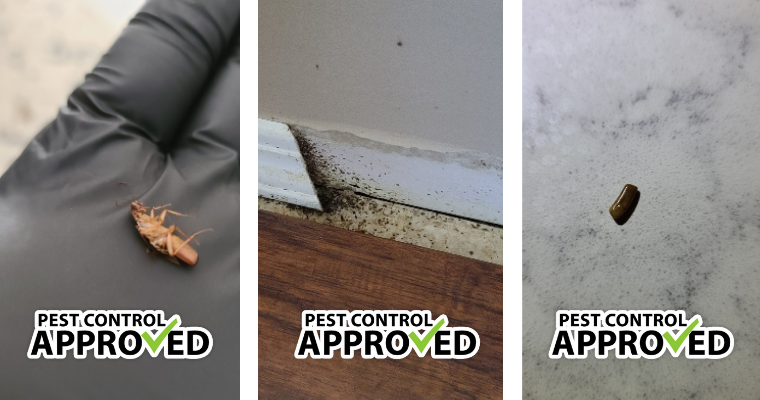
Favorable Cockroach Conditions
Cockroaches need three basic things to survive: food, water, and shelter. They can easily live in small spaces such under baseboards or in cupboards and often live in clusters of both adult and Baby Cockroaches. They thrive in unused area such as storage closets or basements. Most prefer the moist conditions found in bathrooms or near leaky taps. Removing standing water and fixing leaks can reduce the cockroach population. Unfortunately, cockroaches are not picky eaters. They can eat anything from crumbs of food to dust! This makes removing all food sources difficult. But, frequent cleaning of dirty dishes, counters, and floors can reduce their food supply. You can also disturb their habitats by cleaning and airing out unused storage rooms.
Sudden temperature changes can also drive cockroaches indoors. If the weather has suddenly turned hot or cold, you could expect an influx of cockroaches. Your home might be a reprieve from dramatic temperature shifts. However, in Canada, most roaches cannot survive outdoors and move from home to home. Placing your belongings on counters or hanging in coat closets at friend’s homes or at restaurants to prevent bringing a cockroach home. If you are returning home after travelling, remove all belongings and place your luggage in a garbage bag and leave it outside or in a garage for up to six months. If the suitcase is washable, you can wash it and your clothing in the washing machine with hot water to kill any roaches.
Quick Cockroach Treatment Guide:
- Glue Traps – Set 5-6 traps in high traffic areas. These traps capture cockroaches on their sticky surface. It takes up to a day for the cockroaches to die. These traps can also capture spiders and other insects. Traps will need to be replaced every few days until the infestation is removed.
- Gel Bait Traps -These traps use poisoned gel to instantly kill cockroaches. Place dabs of the bait in potential cockroach areas such as in storage rooms and under the sink. Remove deceased cockroaches quickly and reapply the bait every three days. These should be kept away from children and pets.
- Bait Stations – Bait stations are plastic containers that use a poisonous gel or powder. The powder kills the cockroaches who eat it. More cockroaches will die as they eat the dead roaches. This cycle will continue and kill a large portion of the population. Bait stations can be used for longer than gel bait traps.
- Roach Spray – Aerosolized sprays can be used in storage areas but should not be sprayed anywhere near food or food preparation areas. As such, they are best used preventatively and not after roaches are found. If used, they should be applied to cracks and potential entry points such as around windows.
- Bug Bombs – Bug bombs, or foggers release pesticides into a whole room. They coat wide areas, but can miss the corners and crevices that cockroaches hide in. They also require you to leave the house for several hours. Other methods are preferred for DIY home use.
- Borax or Dust – Borax or insecticide dust can be applied in thin amounts around baseboards, cupboards, and other hiding spots. Avoid applying to food preparation surfaces or around pets.
For more information on cockroach infestations and home remedies, see our Complete Guide to Cockroaches


